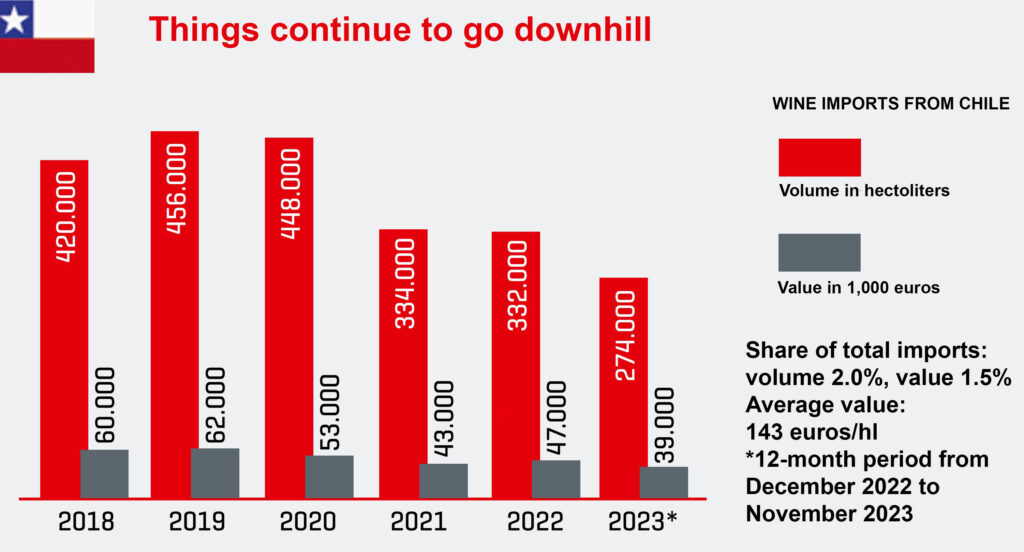
Wine from Chile is particularly characterized by an elegant and silky character, which is precisely due to the proximity to the Pacific Ocean and the Andes. Due to the high altitudes and the cooling sea wind, the grapes slowly ripen to exceptional quality. With about 500 million liters of wine annually, Chile holds the fifth place among wine exporting countries worldwide.
The most famous Chilean wine regions are the Valle Central and the Maipo Valley. The velvety red wines and flowery white wines are clearly the rising stars overseas.
Main grape varieties (WHITE):
Sauvignon Blanc, Chardonnay Fruity, floral yet mild, this is the best way to describe the character of Chilean white wines.
Most important grape varieties (RED)
Cabernet Sauvignon, Merlot, Carmenere
If there is one variety that emphatically underlines the uniqueness of Chilean wine, it is the old French grape variety Carménère, originally from Bordeaux.
Main regions
Central Valle with the subregions of Maule and Maipo

In Chile, there are major differences between the north and the south in 2024. In the north, the grape harvest started over two weeks earlier than usual due to a high pressure area that prevented rain, which meant that the vines had to be watered and crop losses of up to 20 percent were recorded. The summer there was very dry and hot, which accelerated ripening. In contrast, the harvest in central and southern Chile was delayed by 20 days. These regions, including Maipo and Colchagua, experienced a warm, rainy winter and spring, which led to late and weak budding. The summer remained cool and humid, with an extended ripening period. Despite smaller vintages, there are no supply problems according to importer Johannes Wattler, but it is still too early to conclusively assess the quality of the 2024 wines.

